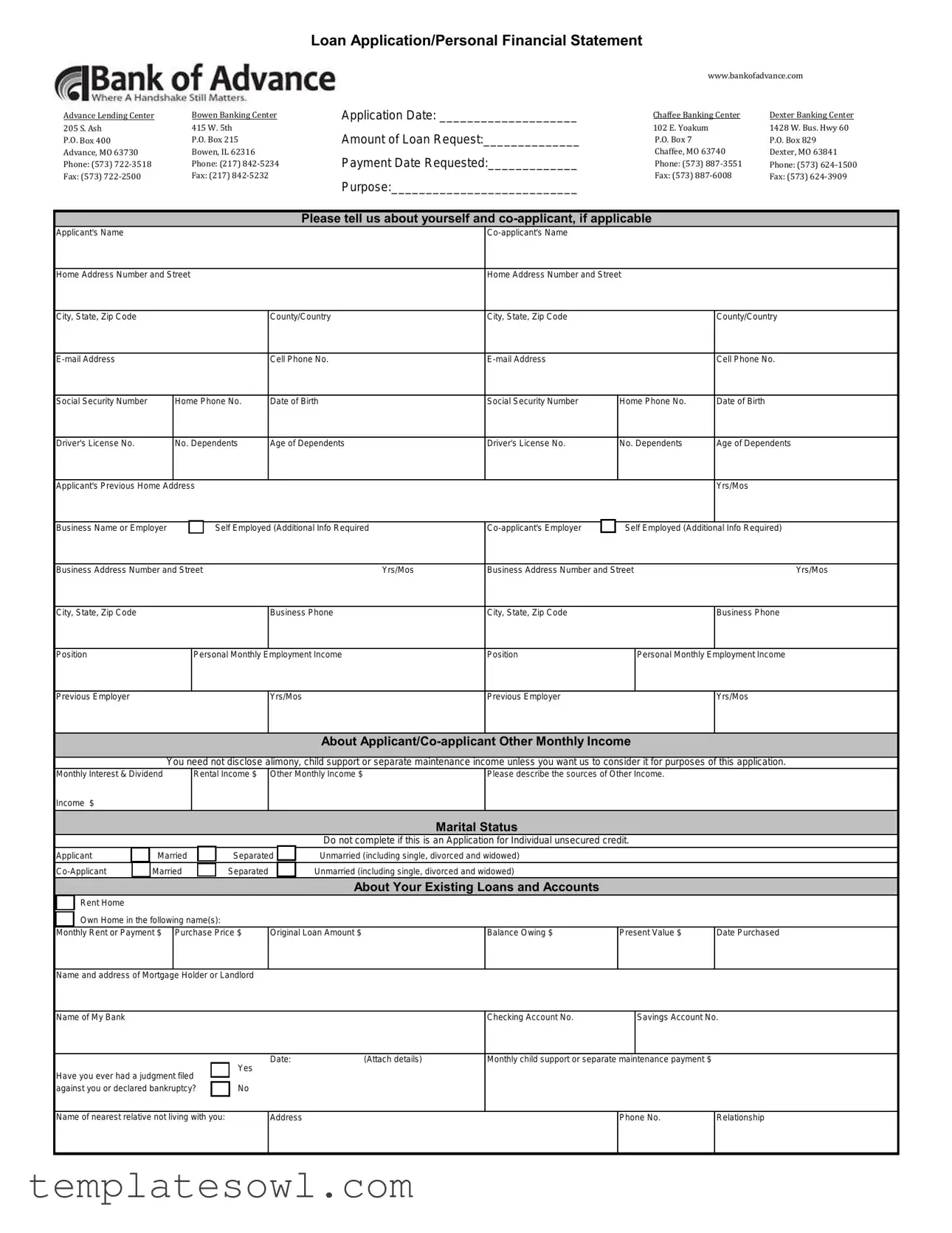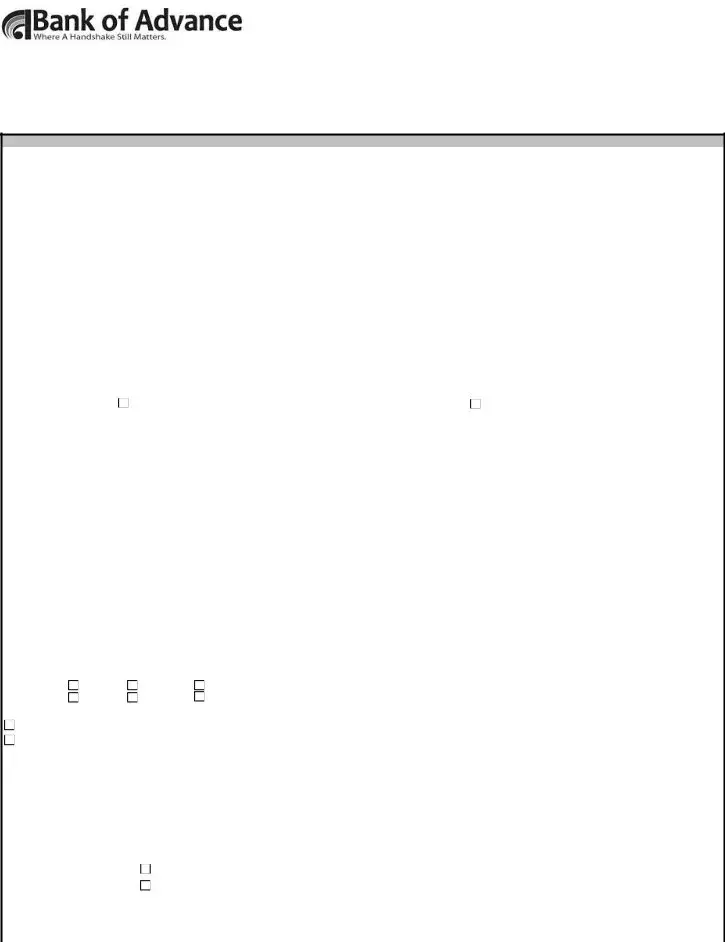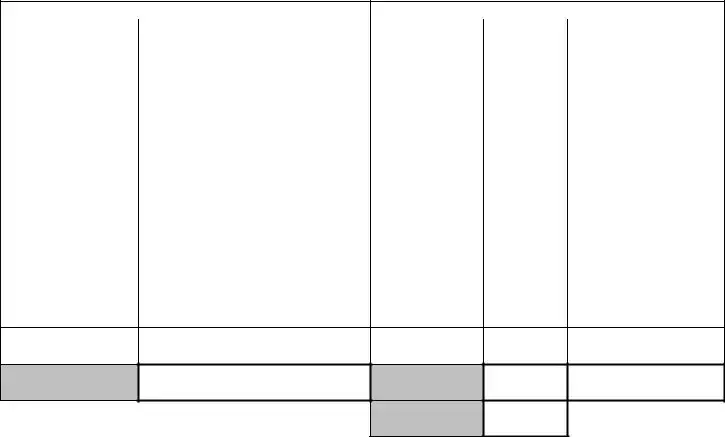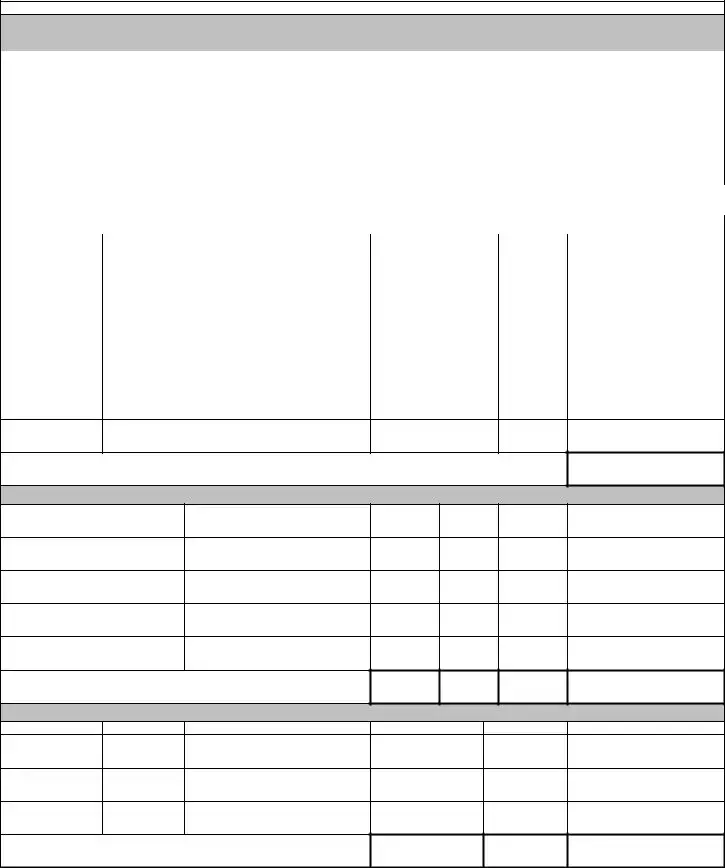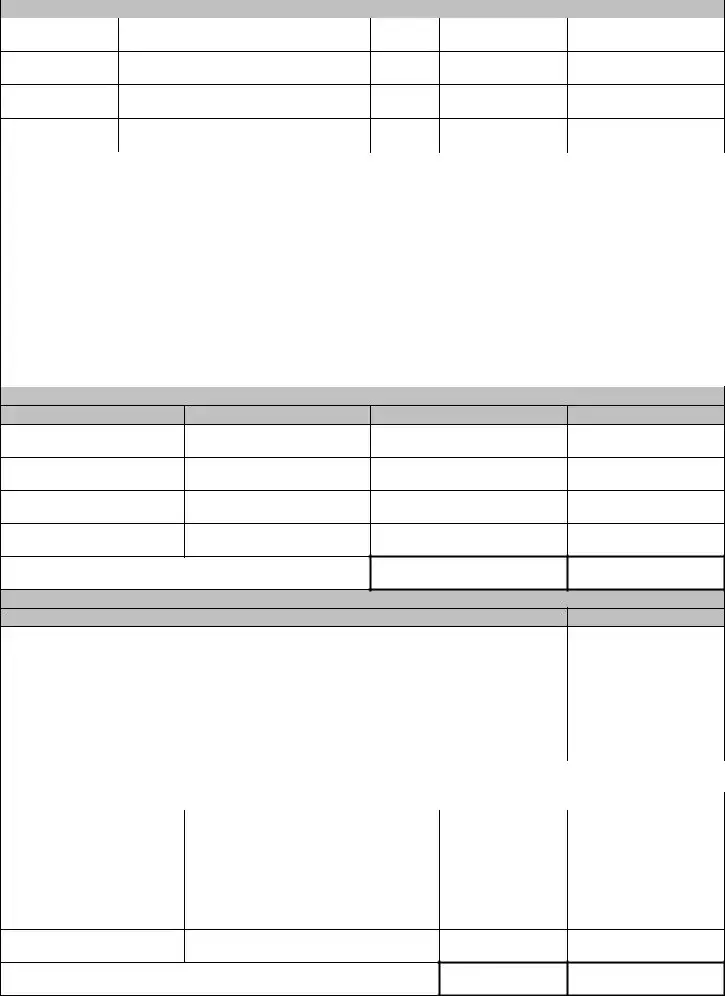1. What information do I need to provide about myself on the bank application form?
On the bank application form, you are required to provide personal details such as your full name, home address, email address, social security number, date of birth, and driver's license number. If you have a co-applicant, you will need to provide the same information for them as well, including their relationship to you. Make sure to include reliable contact numbers and the number of dependents, if applicable.
2. How do I indicate the purpose of my loan request?
In the designated section of the application form, you will find a line to specify the purpose of your loan request. This can include options like home improvement, debt consolidation, or education expenses. Clearly stating the purpose helps the bank understand your needs and make appropriate decisions regarding your application.
3. What should I include in the income section of the form?
This section is crucial for assessing your financial situation. You should provide your monthly employment income, details of any other monthly income sources, and whether these include benefits such as alimony or child support. Remember, it's not mandatory to disclose child support unless you want it considered for your loan application.
4. How can I report existing loans and obligations?
You'll need to fill out the section that asks for details about your existing loans and obligations. This includes your bank accounts, mortgage or rent payments, and any loans you currently have. Make sure to include information about the lender, the balance owing, and the monthly payments for each account. Proper documentation helps in creating a clear picture of your financial obligations.
5. What are assets, and why do I need to report them?
Assets refer to items of value that you own. This can include cash, stocks, real estate, automobiles, and retirement accounts. Reporting these assets allows the bank to assess your overall financial status, ensuring they have a full understanding of your economic standing. Be thorough while documenting each asset, including its estimated value.
6. What is a credit report, and why does the lender need it?
A credit report contains your credit history and reflects your creditworthiness. When you authorize the lender to obtain your credit report, they will assess your past borrowing behavior, like how timely you are with payments. A good credit score can play a significant role in the approval process of your loan application.
7. Are joint applications treated differently?
Yes, joint applications are typically considered together as a single financial entity. This means that the incomes, debts, and credit histories of both applicants are evaluated. Make sure both parties are comfortable with sharing their financial information, as it could impact the overall loan approval and terms offered.
8. What should I do if I need more space to provide additional information?
If the provided sections on the application form do not allow you enough space for details, feel free to attach extra pages. Clearly label any additional documents or information with your name and application date to ensure the lender associates them correctly with your application. Ensure all supplementary information enhances your overall application.
9. What happens after I submit my application?
Once your application is submitted, the lender will review the information provided and may reach out for additional details or documents. They will check your credit report and assess your financial status based on the information you've given, and then communicate their decision regarding your loan application. Remember to keep an eye on your email and phone for any updates.
